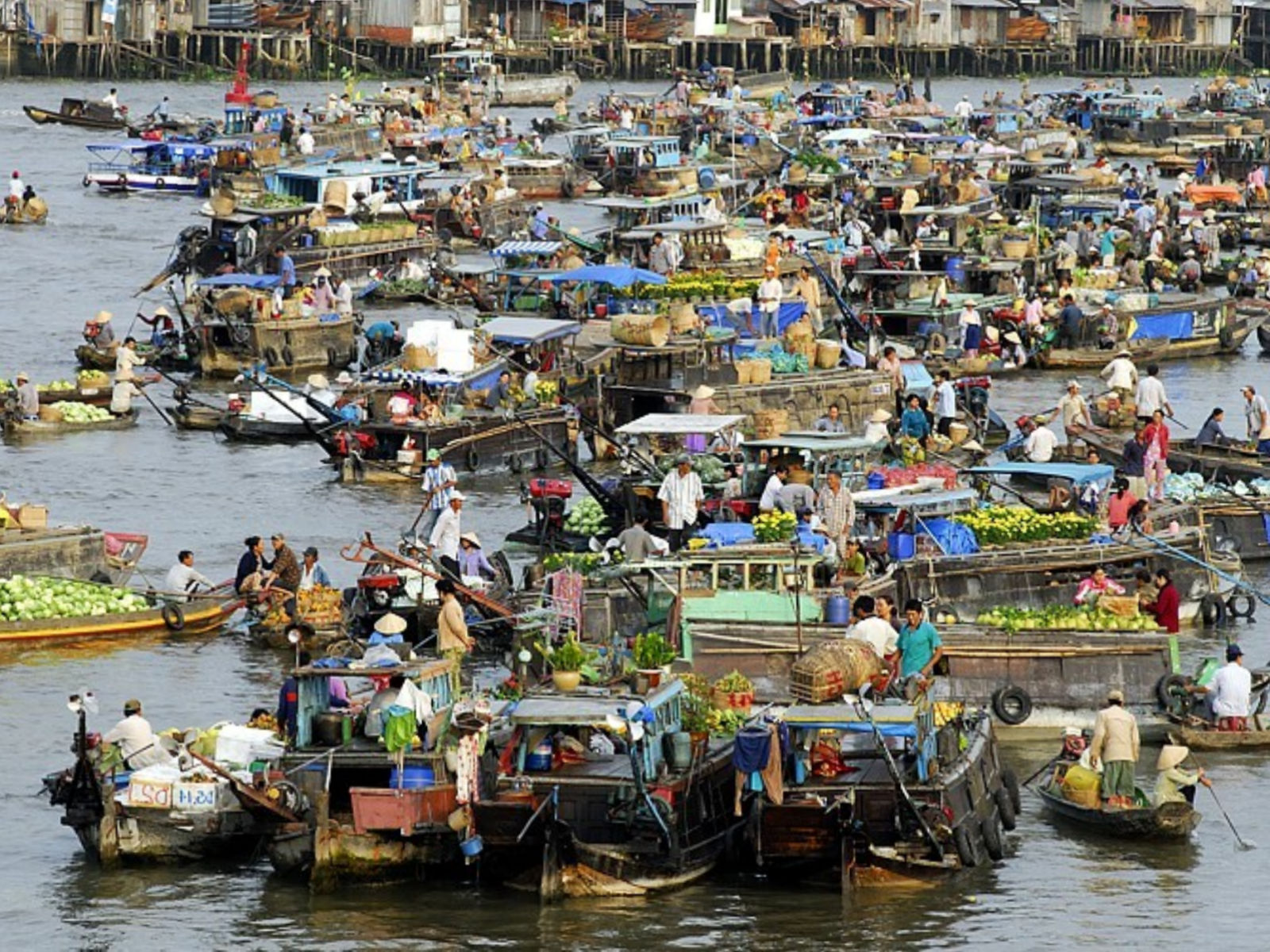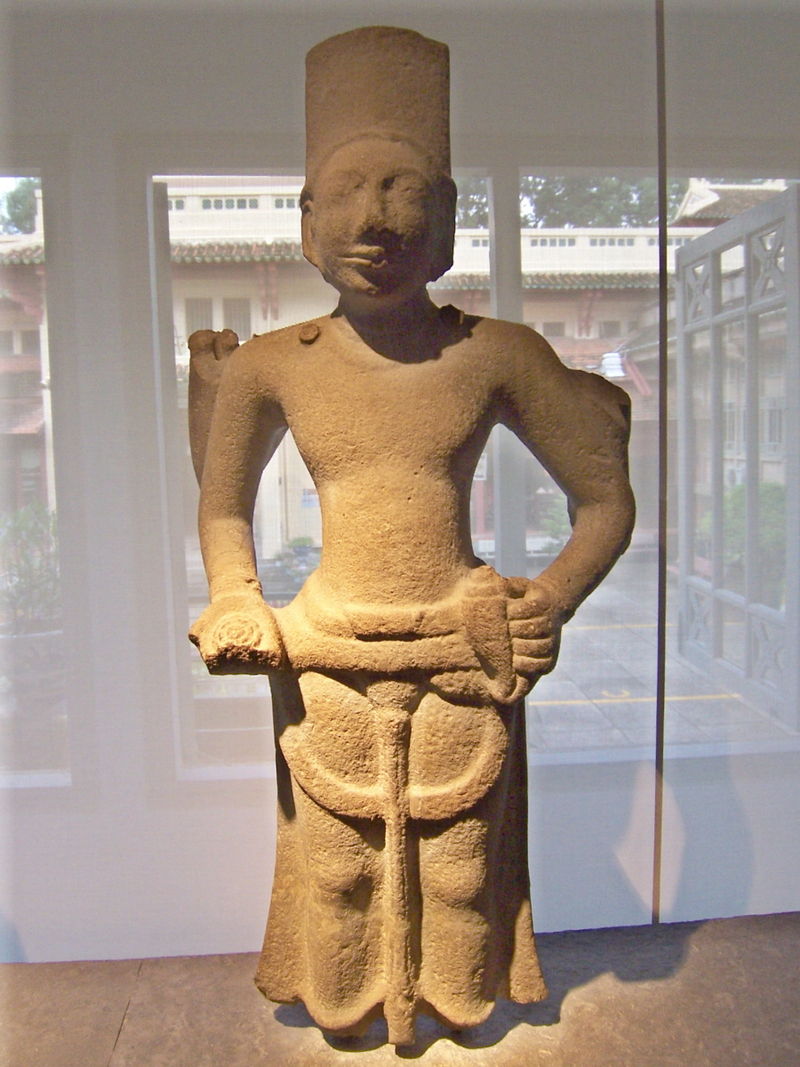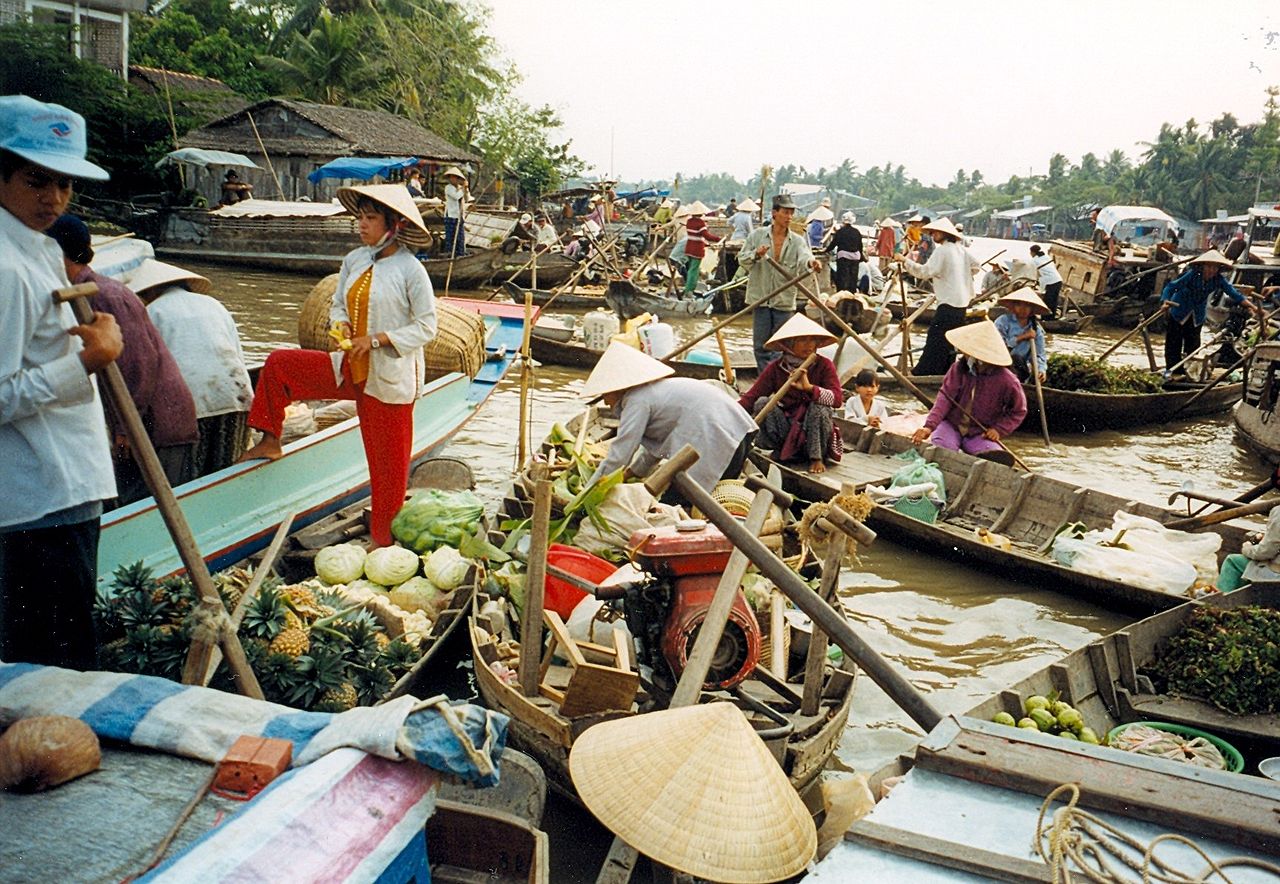
AsianOverland.net
Tour Guide - Itinerary
Asian Overland Sydney to London
Started 22/06/2022 Finished 21/06/2023365 Days ITINERARY
Day 65 date 25/08/2022PHNOM PENH, CAMBODIA to CAN THO, VIETNAM
ASIANOVERLAND.NET SYDNEY TO LONDON DAY 65: PHNOM PENH, CAMBODIA TO CAN THO, VIETNAM
The Mekong Delta region encompasses a large portion of south-western Vietnam, over 40,500 square kilometres. Its wet coastal geography makes it the "rice basket of Vietnam", contributing more than half of the nation's rice production. .
The Mekong Delta has been occupied since the 4th century BC. As a result of Khmer, Vietnamese, Chinese, and French settlement in the region, the delta and its waterways have numerous names, including the Khmer term Bassac for the lower basin and the largest river branch flowing through it. The Vietnamese do not speak of a "Mekong River", as there are nine main branches of the Mekong in the Mekong Delta in Vietnam. The Mekong River starts in Tibet, China, which has 20% of the Mekong's catchment and flow, the other 80% being in Laos, Thailand, Cambodia and Vietnam.
The Mekong Delta is a 'biological treasure trove'. Over 1,000 animal species were recorded between 1997 and 2007, and new species of plants, fish, lizards, and mammals have been discovered in previously unexplored areas, including the Laotian rock rat, thought to be extinct. The low lying coastal geography of the region makes it vulnerable to climate change causing sea level rise, coastal erosion and saltwater intrusion.
Early Champa Kingdoms evolved from local sea people off the coast of Vietnam. The emergence of Champa in the late 2nd century AD shows early Southeast Asian statecraft and the making of Southeast Asia. The peoples of Champa established and maintained vast trade networks across the region, connecting the Indian Ocean, India, China and Eastern Asia, until the 17th century. The Champa people created the first and oldest native Southeast Asian language literature, written down around c. 350 AD, predating the first Khmer and Malay texts by centuries.
Although the Cham kingdoms had a multiethnic population, it mainly consisted of Austronesian Chamic-speaking peoples. Champa reached its peak in the 9th and 10th centuries AD. Thereafter, it began a gradual decline under pressure from Đại Việt, the North Vietnamese Empire based around modern Hanoi.
Hinduism, adopted through conflicts and conquest of territory from neighboring Funan in the 4th century AD, shaped the art and culture of the Champa Kingdom for centuries, demonstrated by the many Cham Hindu statues and red brick temples in Cham lands. Mỹ Sơn, a former religious center, and Hội An, one of Champa's main port cities, are now World Heritage Sites.
The Champa and Cambodian Kingdoms extended across the coast of central and south Vietnam from the 2nd century AD until 1832, when it was annexed by the Vietnamese Empire under emperor Minh Mạng.
Cần Thơ is a beautiful delta coastal city with wonderful people and food. It is the fourth-largest city in Vietnam, and the largest city along the Mekong Delta region in Vietnam. It had a population of around 1.3 million in 2018, and is on the south bank of the Hậu River, a distributary of the Mekong River.
Cần Thơ is famous for its floating markets, especially Cai Rang Floating Market, where people sell and buy goods on the river, as well as the bird gardens and the port of Ninh Kiều. The city offers a wide range of tropical fruits including longan, jackfruit, mango, guava, banana, rambutan, mangosteen, dragon fruit and durian. Great place to visit, with many examples of French cooking influence on Vietnamese cuisine.
© This work is copyright. Apart from any use permitted under the Copyright Act 1968, no part may be reproduced by any process, nor may any other exclusive right be exercised, without the permission of Peter Searle, peter@portseavillageresort.com; 1980-2024.
Website built by Justin O’Dea www.webdeveloperdocklands.com.au







,_Malaysia,_Sumatra,_Borneo_-_Geographicus_-_Siam-ottens-1710.jpg)

